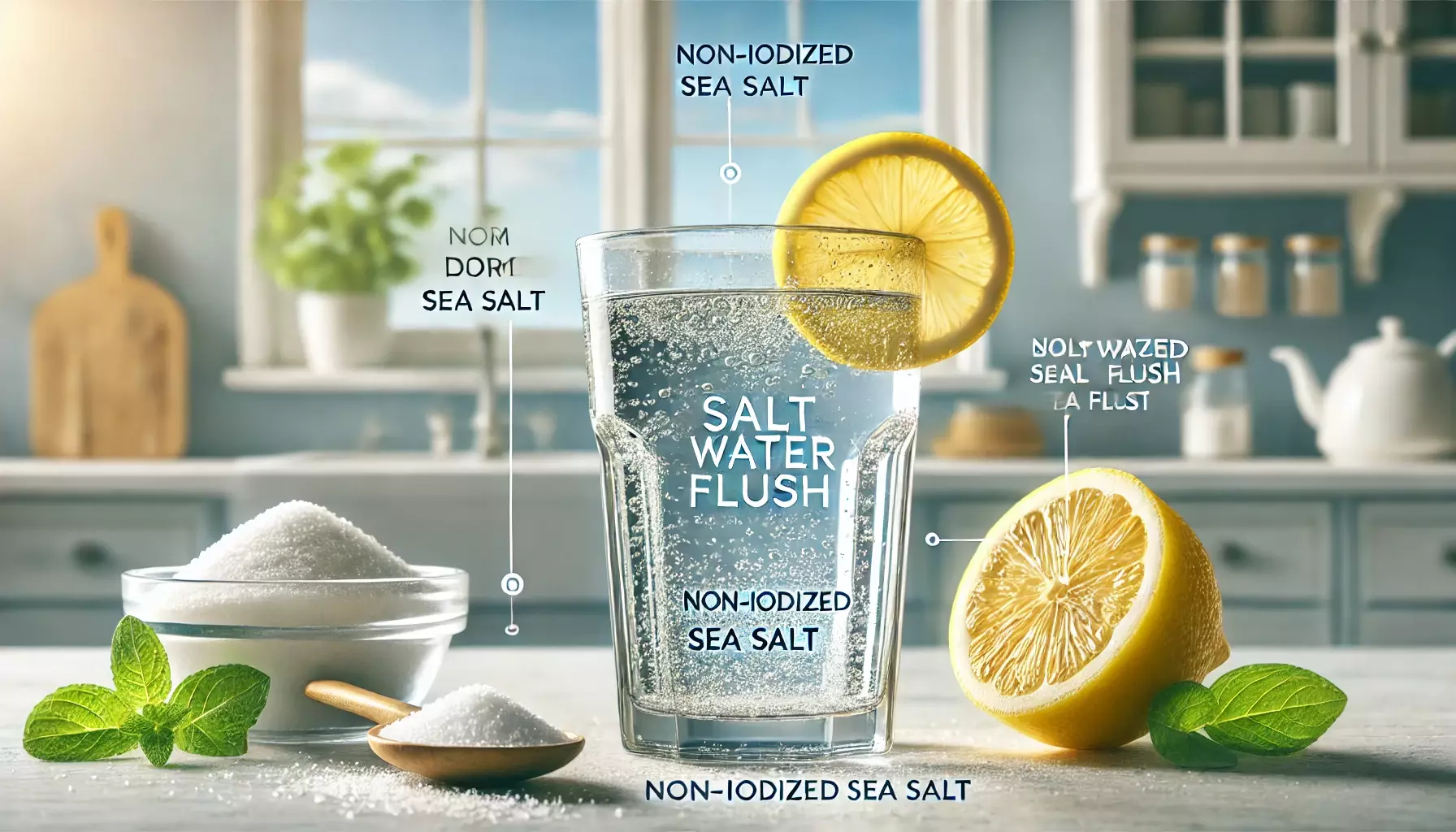What is a Salt Water Flush?
A salt water flush involves drinking a solution of warm water and non-iodized salt (usually sea salt or Himalayan salt) to promote a bowel movement. This practice is often used as part of detox regimens, such as the Master Cleanse, but can also be done on its own to relieve constipation and improve overall gut health.
Salt Water Flush Recipe
Here’s a simple recipe for a salt water flush:
Ingredients:
- 2 teaspoons of non-iodized sea salt or Himalayan salt
- 1 liter (32 ounces) of warm water
- Fresh lemon juice (optional, for taste)
Instructions:
- Mix the Salt and Water: Dissolve 2 teaspoons of non-iodized salt in 1 liter of warm water. Stir well until the salt is completely dissolved.
- Optional Lemon Juice: Add a squeeze of fresh lemon juice to improve the taste and provide additional detoxifying benefits.
- Drink Quickly: Drink the entire solution quickly on an empty stomach, preferably first thing in the morning.
Benefits of a Salt Water Flush
- Colon Cleansing: The salt water flush can help clear out waste material from the colon, promoting a cleaner and healthier digestive tract.
- Improved Digestion: By flushing out toxins and accumulated waste, this practice can enhance digestive function and nutrient absorption.
- Relief from Constipation: The high salt content stimulates bowel movements, providing relief from constipation.
- Detoxification: Regular salt water flushes can aid in removing toxins from the body, supporting overall health and wellness.
- Hydration: While it may seem counterintuitive, the balanced salt solution can help maintain proper hydration levels by ensuring water is retained in the body.
Risks and Precautions
While the salt water flush has its benefits, it's important to be aware of potential risks and take necessary precautions:
- Dehydration: Excessive use of salt water flushes can lead to dehydration. It’s crucial to stay hydrated by drinking plenty of water before and after the flush.
- Electrolyte Imbalance: The high salt content can disrupt the body's electrolyte balance, leading to symptoms like dizziness, weakness, and muscle cramps.
- Kidney Strain: Individuals with kidney problems or those on a low-sodium diet should avoid salt water flushes, as the excess salt can strain the kidneys.
- Digestive Discomfort: Some people may experience nausea, bloating, or cramping after drinking the salt water solution.
- Not Suitable for Everyone: Pregnant women, children, and individuals with certain health conditions should avoid salt water flushes. Always consult with a healthcare provider before starting this or any other detox regimen.
How to Do a Salt Water Flush Safely
- Prepare: Choose a time when you can stay at home for a few hours, as the flush will likely result in multiple trips to the bathroom.
- Stay Hydrated: Drink plenty of water before and after the flush to prevent dehydration.
- Listen to Your Body: If you experience severe discomfort or any adverse reactions, stop the flush and seek medical advice.
- Moderation: Limit the frequency of salt water flushes to avoid potential risks. Once a week or less is generally recommended for most people.
The salt water flush can be an effective method for cleansing the colon, improving digestion, and supporting overall detoxification. However, it’s essential to approach this practice with caution and be mindful of the potential risks. By following the proper steps and listening to your body, you can safely incorporate salt water flushes into your wellness routine. As always, consult with a healthcare provider before beginning any new health regimen to ensure it’s appropriate for your individual needs.






